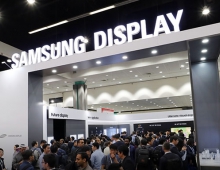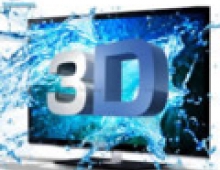
Will 3D Find Its Way Into The Home?
3D content has been promoted as the future or home entertainment. However, it may be hard to find its way to your living room unless the technology matures and a format wars is avoided.
The problem lays on the different approaches in the 3D technology and 3D TV panels, the lack of a standard for 3D broadcasting and of course the incompatibilities of existing CE hardware with the 3D content.
Different 3D approaches
The currently available 3D systems are using technologies such as passive polarization, Dolby/Infitec light filtering and active shuttering.
Passive Polarization sets are unsuitable for 3D Blu-ray, but they are compatible with cheap polarized glasses, making ideal for use mainly in use in public places where 3D content will be broadcasted.
Dolby's 3D Digital Cimema uses a full-spectrum color-filter technology licensed from Infitec, enabled by the passive Dolby 3D Glasses, The system is claimed to provide realistic color reproduction and sharp images.
Active shuttering is currently the popular choice amongst consumer electronics giants who are investing in 3D display technology. The primary reason for this is that this technology requires a very minimal modification to current HDTV displays. The individual eye pieces of these glasses incorporate liquid crystals and a polarization filter so that when a voltage is applied, the glass turns dark and prevents light from transmitting through. Thus the left and right eye glass can be shuttered alternatively in this manner and this shuttering effect is synced with the refresh rate of the display. The 3D TV displays a frame for the left and right eye alternatively and the sync with the active shutter glass ensures that each eye only ever views the image it is meant to see. As a result, the technology only needs a refresh rate enhancement for current LCD and Plasma TVs (minimum refresh rate of 120 Hz).
However, all of the above approaches for 3D cut the light escaping from a TV or projector to 30%, and the glasses worn by the viewer dim the picture even more.
Panasonic is demonstrating Blu-ray’s ability to deliver Full HD 1920 x 1080 to each eye. Viewers have to wear shutter glasses.
Sony is also following the active shuttering approach for 3D. However, the active glasses needed for a Panasonic plasma TV will not work with a Sony LCD TV, and vice versa.
In an effort to promote its plasma business, Panasonic is questioning the ability of LCD panels to adequately display 3D content without crosstalk caused by leakage of the left image into the right. LCD screens cannot switch images fast enough, even if their refresh rate is 200 Hz, Panasonic claims.
On the other hand, viewing in 3D with glasses and filters always reduces the picture brightness. The fact that you can get more light from an LCD compared to plasma may be an advantage in the future.
Toshiba also said it would launch an active Full 3D TV later this year.
It is obvious that there are already many different display systems frame-sequential TV or projection with active shutter glasses, frame-sequential polarized projection, passive polarized interlaced TV, and Dolby/Infitec color filtering, with autostereoscopic no-glasses 3D already working and promised for the future home.
Intel claims that its chips can easily handle 1080p HD 3D. The company has showcased passive polarizing 3D content displayed o a JVC TV with RealD glasses. The company has also demonstrated shutter 3D games.
When available, 3D broadcasts should be compatible with existing receivers. Currently, broadcasters are in seeking of the most efficient way to transmit the left and right images in a single standard compressed TV picture. This means that the 3D broadcasts are most appropriate for use with passive polarized TV sets and not the TVs intended for Blu-ray 3D. So consumers who may already having the so-called 3D-ready TV sets (120Hz of higher) will be able to enjoy 3D broadcasts but not 3D content coming from their brand new 3D BD player or upgraded PS3s.
3D incompatibility with HDMI 1.3
The latest version of the HDMI standard 1.4 supports both the 3D transmission and the Blu-ray 3D content (MVC Multiview Coding - variant of MEPG-4 H.264 used for BD 3D).
New chips are needed for the new 3D hardware with HDMI 1.4b ports. However, engineers should also address the issue of how legacy hardware (with HDMI 1.3 ports) will cope with the Full HD from an MVC Blu-ray Disc.
The currently available AV amplifiers and receivers are used to switch and route HDMI audio and video signals, and decode high-resolution Dolby and DTS audio. Existing AV amplifiers and receivers only have HDMI 1.3 connectors and won’t be able to pass the HDMI 1.4 or 1.4a control codes through to a TV.
Although HDMI 1.4 has an audio return path, which lets a TV send digital audio back to an AVR, the quality is limited to SP/DIF PCM, Dolby or DTS.
Existing HDMI 1.3 AVRs may be able to pass a broadcast 3D signal to a 3D TV without problems because the signal is intended to be compatible with existing broadcast receivers. Of course, a firmware upgrade for the AVR will be needed in order to understand when a broadcast signal is 3D. However, legacy AVRs will not be able to recognize what comes out of the 3D player, since BD 3D packs two Full HD frames into a single picture frame that is much bigger than an ordinary BD picture frame.
Panasonic's latest BD 3D player has coped with this issue by adding two separate HDMI outputs - one Ver 1.4 for video to a 3D TV, and one Ver 1.3 - to its new 3D Blu-ray player. The HDMI 1.3 port is customized for audio to an existing new AVR.
It is not clear whether other BD players will feature two HDMI ports. For sure, Sony's latest BD 3D player doesn't.
3D is a new technology and as such, the confusion and ignorance around it. It is obvious that watching 3D in the cinema halls is very exciting but Hollywood will probably have hard times selling it to consumers.




















